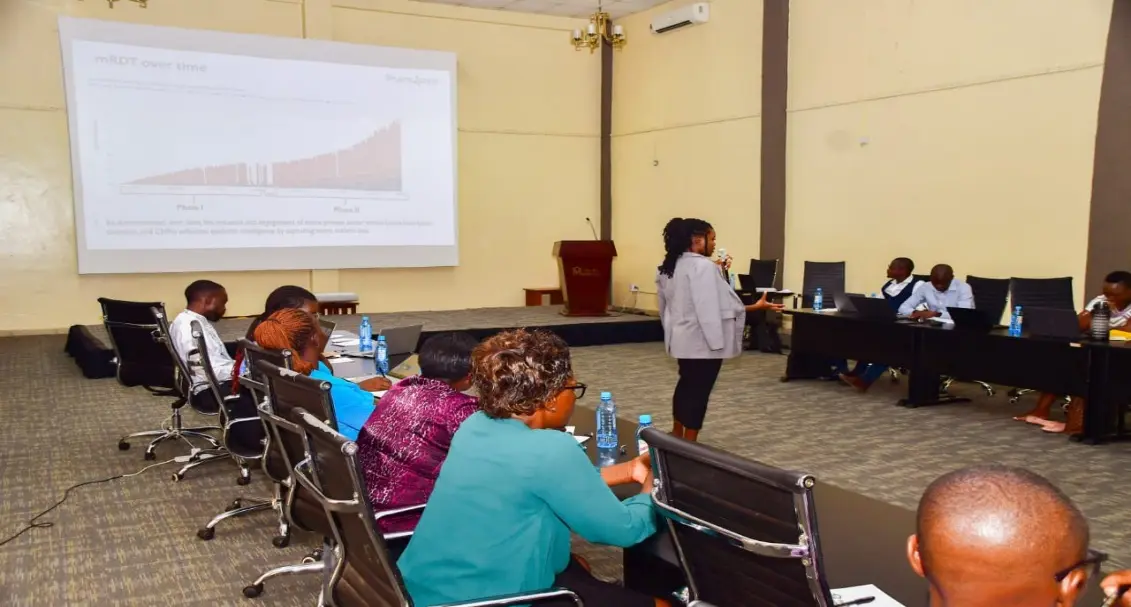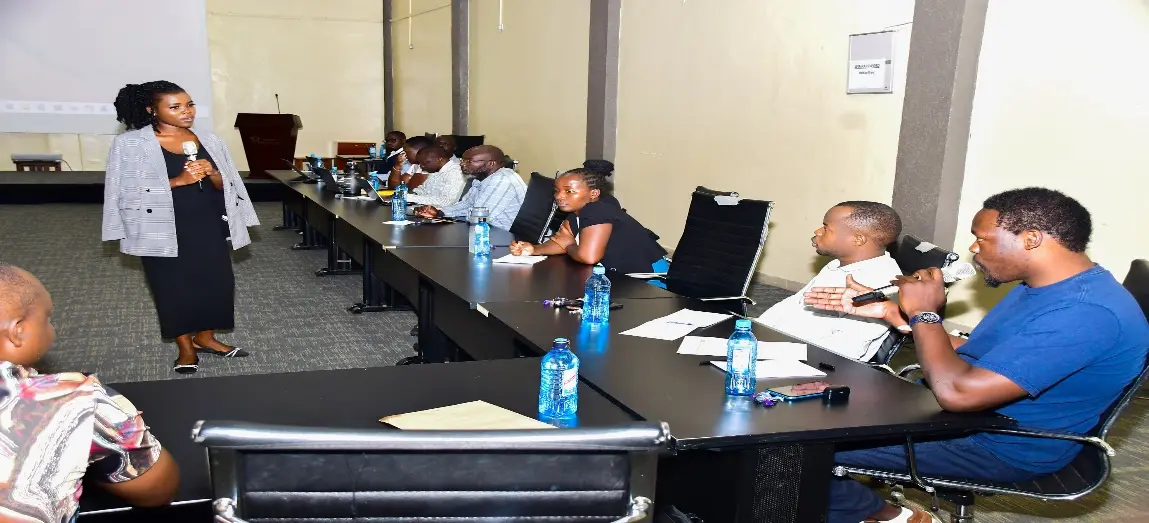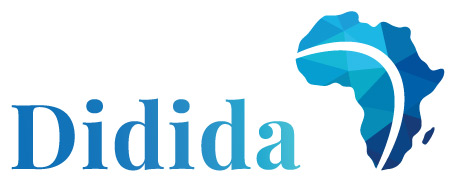Strengthening Epidemic Data Accuracy in Africa: Insights from the 1st Quarter 2025 ConnDx Data Review Workshop in Kisumu, Kenya
March 5, 2025 | Kisumu, Kenya
As part of its collaboration with the Kisumu Department of Health (DoH), Didida is regularly organizing update meetings to share results and discuss ways forward in terms of improving quality of disease monitoring as well as policy advice. Over 2024, several workshops were organized.
The first Quarterly ConnDx Data Review Workshop of the year 2025 was held at The Vic Hotel in Kisumu on March 5, 2025 It brought together key stakeholders from the Didida Project, PharmAccess Foundation, and Kisumu County Health Management Team (CHMT) to review and explore activities to improve the alignment of epidemic data reporting between the digital Didida platform and the Kenya Health Information System (KHIS) for Integrated Disease Surveillance and Response (IDSR). With malaria being a key disease in the area, the workshop particularly aimed to enhance data accuracy, identify gaps, and strengthen malaria surveillance efforts across Kisumu County.

DIDIDA facility representatives, SCHMT, CHMT, DIDIDA PhD Students and PharmAccess teams
Key Participants and Stakeholders
The event was attended by representatives from a wide range of Kisumu health management teams, including the CHMT, Sub-County Health Management Teams (SCHMT), and Didida representatives. Participants included public health officers, pharmacists, health records officials, and medical laboratory technologists. Facilitators from the Didida Project, PharmAccess, and the Kisumu County government provided expert insights on malaria data management and disease surveillance.

ConnDx Update Presentation by PharmAccess Team
Major Findings and Challenges
One of the key issues identified was the high malaria positivity rate among adolescents. Several factors were postulated to contribute to this trend, including insufficient health education in schools, the lack of targeted malaria prevention initiatives for this age group, the evening outdoor lifestyle, and low usage of insecticide-treated nets (ITNs) despite their effectiveness. The absence of structured programs specifically designed to address malaria among adolescents leaves them particularly vulnerable.
Another major concern raised was the uncertainty surrounding malaria diagnostics procurement. Following the cessation of USAID funding, the availability of malaria Rapid Diagnostic Tests (mRDTs) beyond the next five months remains unclear. A new procurement plan is needed to avoid potential diagnostic shortages that could disrupt malaria case management.
The workshop also highlighted significant discrepancies in data reporting. Underreporting was a major issue at several key facilities, primarily due to high staff turnover in the data departments. Delays in reassigning and training new staff have contributed to reporting gaps, including missing records on maternal and neonatal deaths in the Didida platform. Another important issue were the observed differences in data submitted through Didida versus KHIS platforms. This could be partly due to differences in reporting structures between these systems. While Didida facilities report data directly and digitally via Health Records and Information Officers (HRIOs) into mobile data entry tools, KHIS data is submitted through sub-county disease surveillance coordinators (SCDSCs), often first in paper-based versions. Without drawing conclusions about which data are the correct ones, identification of data discrepancies helps identifying potential challenges in the epidemic data monitoring system. Therefore, the usage of a parallel/alternative data collection system on a representative fraction of all healthcare providers can be recommended as a quality improvement approach
A temporary decline in the AI-driven data analysis of the Didida platform was also noted in November, largely attributed to reduced testing activities during a transition phase in field operations. Additionally, the reporting of tuberculosis cases was identified as an area with discrepancies. The MOH 505 IDSR tool does not capture normal TB cases and focuses only on extensively drug-resistant (XDR) and multidrug-resistant (MDR) TB cases. This limitation has led to no reporting of regular TB cases in both the Didida and KHIS platforms.

Presentation of findings on Data Analysis comparison between the DIDIDA platform and the KHIS platform, DIDIDA PhD Student.
Key Recommendations
The workshop emphasized the need to improve IDSR-KHIS data quality assurance. The county health department, under the leadership of the County HRIO, will implement rigorous data auditing measures to ensure accuracy and reliability. Regular cross-platform audits between Didida and KHIS will help identify and correct inconsistencies in epidemic data reporting. Didida on a representative subset of Kisumu healthcare facilities can be applied as an independent quality assessment for general KHIS-IDSR data collection performance.
Staff turnover was identified as a major barrier to data consistency, and the workshop proposed structured mentorship programs to support facilities facing challenges in reporting. Developing standardized training materials and introducing “train-the-trainer” programs will help build local capacity and reduce reliance on external trainers. Online training modules will also be made available to facilitate the onboarding of new staff and ensure continuity in data collection practices. Strengthening support supervision at the sub-county level will also be a key focus, with structured monthly visits and the use of standardized checklists to ensure data accuracy.
Efforts to improve malaria prevention among adolescents are advised to focus on integrating malaria education into school health programs and launching awareness campaigns to encourage the use of ITNs. By targeting adolescents with tailored prevention strategies, the county aims to reduce malaria infection rates in this vulnerable age group.
Sustaining the availability of malaria diagnostic tests remains a priority, and stakeholders should work together to secure funding and develop sustainable procurement plans. Establishing clear procurement timelines will help ensure an uninterrupted supply of malaria diagnostics.

Interactive Session
Conclusion
The 1st 2025 Quarterly ConnDx Data Review Workshop provided an essential platform to address challenges in epidemic data reporting, with an emphasis on malaria. By improving data quality, addressing reporting inconsistencies, and implementing targeted malaria prevention strategies, stakeholders aim to enhance the effectiveness of malaria surveillance and disease management in Kisumu County. Further strengthening collaboration between Didida and KHIS and ensuring sustainable procurement of diagnostic supplies will remain crucial in maintaining reliable health data and supporting evidence-based decision-making. The workshop underscored the importance of continued partnership and proactive measures to overcome operational challenges and improve public health outcomes.
Want to know more?
Are you a student and you want to learn more? A researcher seeking to consult our publications? A citizen eager to better understand the issues? A decision-maker who can promote this innovation? A journalist looking for an engaging story to tell?
